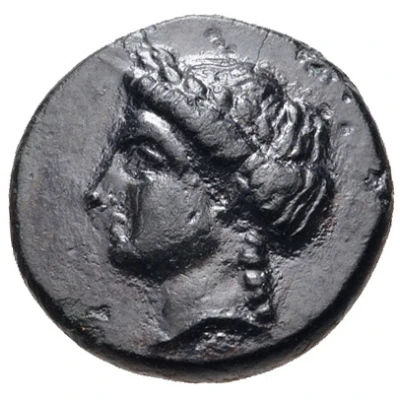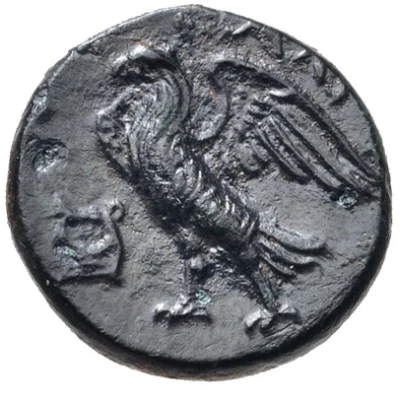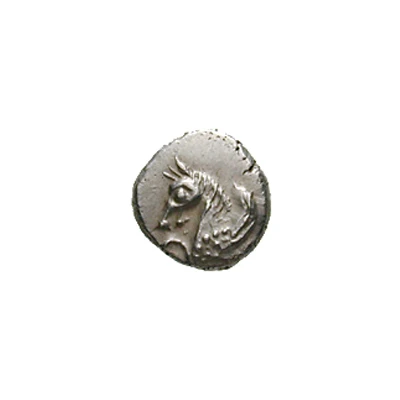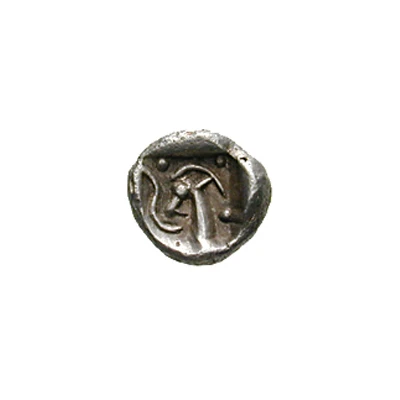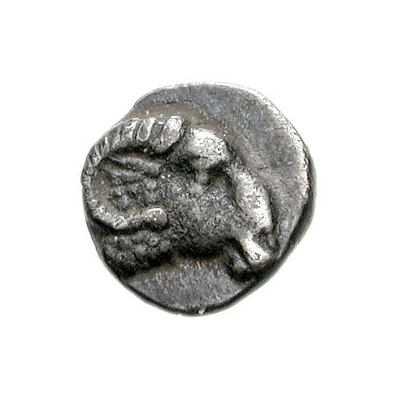
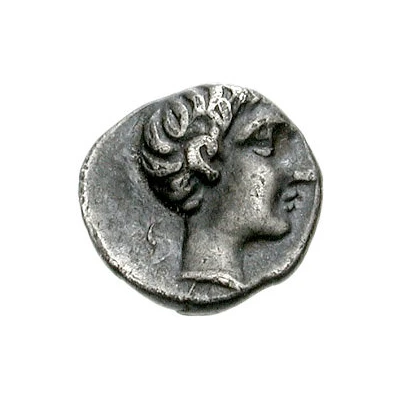

© Classical Numismatic Group, Inc.
Hemiobol 395 BC - 377 BC
| Silver | 0.33 g | 7.0 mm |
| Issuer | Halikarnassos (Caria) |
|---|---|
| Type | Standard circulation coin |
| Years | 395 BC - 377 BC |
| Value | Hemiobol (1⁄12) |
| Currency | Drachm |
| Composition | Silver |
| Weight | 0.33 g |
| Diameter | 7.0 mm |
| Shape | Round (irregular) |
| Technique | Hammered |
| Orientation | Variable alignment ↺ |
| Demonetized | Yes |
| Updated | 2024-10-09 |
| Numista | N#147388 |
|---|---|
| Rarity index | 86% |
Reverse
Male head facing right. Carian letter to left
Interesting fact
The Hemiobol coin was used as a form of currency in ancient Greece, specifically in the city of Halikarnassos (now known as Bodrum, Turkey) during the 4th century BC. The coin features the image of a winged horse, known as the Pegasus, on one side and an inscription on the other. The Pegasus was a symbol of the city and was believed to have been founded by the legendary hero, Hercules. The coin was made of silver and weighed approximately 0.33 grams, making it a valuable and highly sought-after form of currency during its time.
